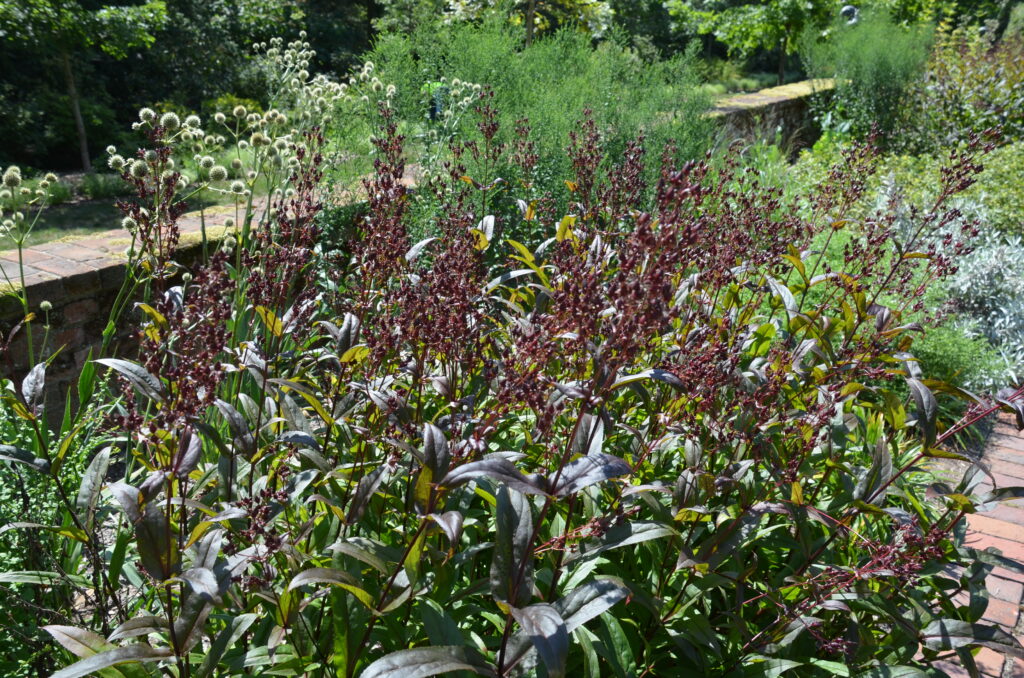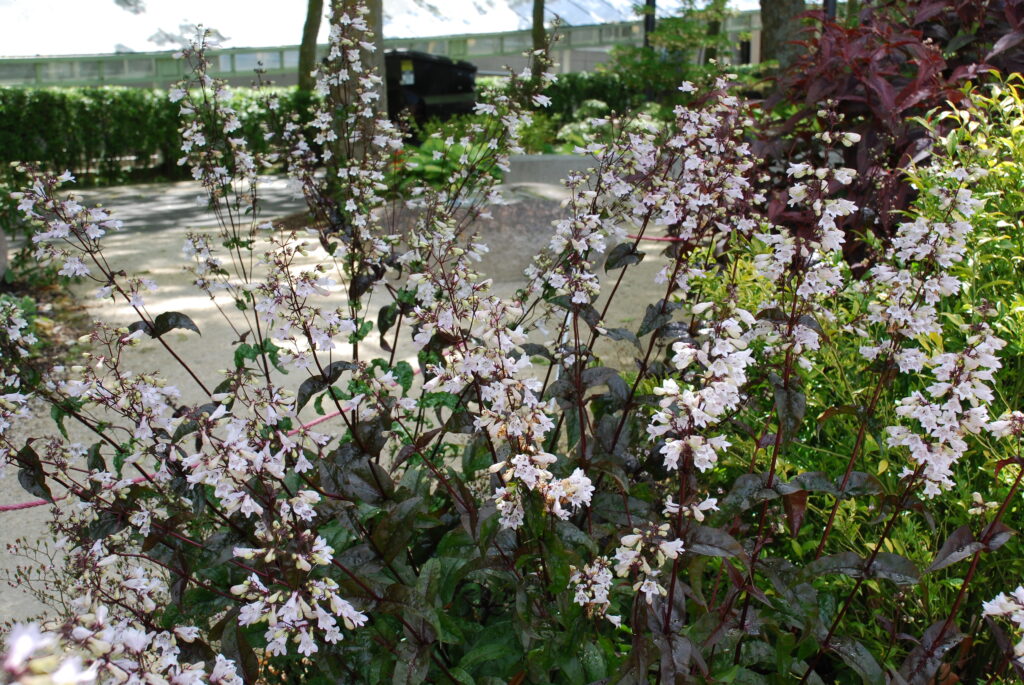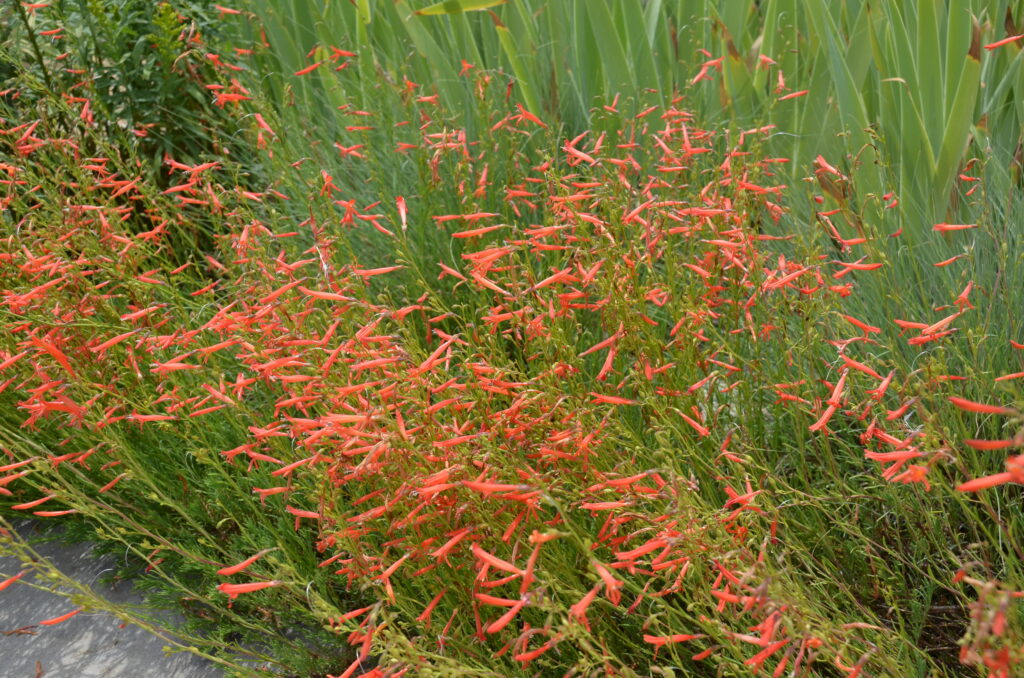
Some 40 years ago, Dr. Dale Lindgren, plant breeder at the University of Nebraska released ‘Husker Red’ penstemon (Penstemon digitalis). This pioneering variety has purple-green foliage and white flowers. New penstemon varieties continue through the breeding pipeline with larger and colorful blooms, more compact habit, or dark foliage. (Z 3-8).
Penstemons (Beardstongue) belong to the Plantain family (Plantaginaceae) and are native to North America; it also includes other flowering gems like snapdragons and foxglove plus 250+ beardtongue species. Many penstemon species include tiny alpine varieties and those that inhabit prairie soils. Most species and varieties grow 1 to 3 feet tall, but there are numerous exceptions size-wise.
Many species have lance-shaped foliage of varying widths and spikes of tubular flowers. Flower colors include pink, red, white, purple, and (rarely) yellow. Some species are short-lived perennials. Beardstongues need full sunlight to perform their best. Most tolerate summer temperatures into the 90s and moderate humidity levels. In general, they do not tolerate wet soil, especially over the winter months. They tolerate drought, but 1-inch of water weekly in the summer will keep plants vigorous and promote better blooming. (USDA 3-9).

Most perform well in fairly nutrient-poor soils and tend to put out too much tender growth in rich soil. Apply an organic fertilizer only once a year. Do not feed with manure.
Beardstongues attract spider mites which can be flitted away with a strong spray of water, insecticidal soap or neem oil. Botrytis leaf mold or powdery mildew are diseases. Good air circulation around plants is a plus and avoid watering plants overhead. Plants don’t need pruning. In late fall cut foliage back to 2-3 inches. They can be propagated by division, stem cuttings, and seed. Plants may self-seed freely.
P. digitalis ‘Husker Red’ grows about 2-1/2 feet tall, blooms in early to mid-summer with 1-inch tubular, pink-flushed white flowers; 4-5 inches long deep maroon leaves arranged in a basal rosette.
P. digitalis ‘Dark Towers’ has burgundy foliage throughout the summer, and deep-pink bell-shaped flowers.
P. digitalis ‘Midnight Masquerade’, a Dale Lindgren introduction, produces a sturdy clump of dark burgundy purple foliage and tubular purple-pink flowers.
P. digitalis ‘Blackbeard’ – lilac purple flowers with their white flaring tubes high above the low mound of deep eggplant purple leaves; 28-34 inches height; Walters Gardens introduction.
P. ‘Dakota Burgundy’ – shorter and more compact than ‘Dark Towers’ with glossy, purple-black foliage that plays off masses of tubular, lavender-violet flowers.
P. barbatus ‘Piña Colada’ – a series of 6 cultivars, with blue, rose, or white flowers on compact plants.
P. ‘Red Riding Hood’ – upright tubular red flowers on a low, bushy mound; strap-like green leaves that resemble pine needles; not recommended for humid Southern gardens.
P. hirsutus ‘Pygmaeus’ – lavender blooms with white lips above dense green leaves on this dwarf plant that reaches up to 6 inches tall. (Z 3-9).
P. heterophyllus ‘Electric Blue’ – vivid blue flowers and compact form to 18 inches tall. (Z 6-9).
Pine-Leaf Penstemon (P. pinifolius) – summer blooming with loose spires of 1-inch narrow scarlet tubular flowers; needlelike foliage; 8-10 inch tall, perfect for dry rock gardens. (Z 4-10).
For additional information, check out The American Penstemon Society website.


 Posted in
Posted in 
